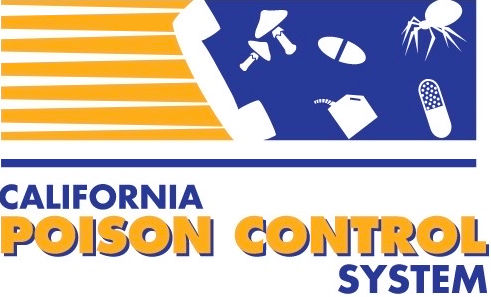Updated April, 2023 by Jeremy Hardin, MD and Alicia Minns, MD
Original author Alicia Minns, MD
Introduction
Diethylene glycol (DEG) is a colorless, odorless, clear liquid with a sweet taste. It is a toxic alcohol that is also an excellent solvent for water-insoluble chemicals. DEG can be a component of antifreeze preparations, various cosmetics, liquid printer ink cartridges, lubricants, brake fluid, wallpaper strippers, and as a plasticizer. It has been implicated in multiple global health catastrophes in which it was substituted for the more expensive, safer medication diluents, with resultant mass deaths. The hallmarks of DEG toxicity are neurotoxicity and renal failure, with deaths still reported to occur despite aggressive treatment with hemodialysis.
Case Presentation
A 50-year-old female presented to a local emergency department with nausea and abdominal pain. She states that she had just drank multiple cartridges of printer ink in a suicide attempt. Her physical exam was notable for black discoloration of the mouth and tongue, and slurred speech. 24 hours after admission she developed coma, anuric renal failure, an anion gap metabolic acidosis, and bilateral cranial nerve VII paralysis. Hemodialysis was initiated, but despite aggressive care the patient died seven days after initial presentation. Further analysis of the printer ink via the material safety data sheet revealed that it contained 50% DEG.
Questions
- What is the typical clinical presentation of DEG poisoning?
- How is DEG poisoning treated?
- What is another component of printer ink with toxicologic significance?
Epidemiology
There have been multiple epidemics of DEG poisoning where it was substituted in pharmaceutical preparations in place of more expensive but nontoxic glycerols or glycerins. Simple errors of cross-contamination do not account for the presence of DEG in pharmaceuticals, as the standard safer diluents are manufactured in a process that does not generate DEG as a byproduct. Intentional addition of DEG to cut costs with or without knowledge of the potential health effects is thought to be the primary method of contamination. The first recorded mass poisoning was the sulfanilamide-Massengil disaster in the United States in 1937 in which DEG was used as a solvent in an antibiotic elixir of sulfanilamide. Deaths were reported shortly after it was distributed and in total over 100 people died – a third were children. This catastrophe directly led to the passage of the 1948 Federal Food, Drug, and Cosmetic Act, which requires manufacturers to demonstrate safety of a product prior to marketing.
Since 1948 there have been over a dozen additional epidemics of DEG poisoning throughout the world resulting in mass casualties. Most of these epidemics have occurred in developing countries with limited access to medical care, inadequate adherence to safe manufacturing processes, and occasionally intentionally deceptive drug manufacturing practices. Other than medications, DEG has been found as a sweetener in Austrian wine leading to one case of renal failure, toothpaste imported from China, and liquid printer ink cartridges.
Pathophysiology
There is little human data regarding DEG toxicity, and most information is derived from animal and ex-vivo laboratory studies. DEG is rapidly orally absorbed, although dermal absorption has also been reported in burn centers. In 1985, five patients being treated for burns in Spain developed renal failure and died due to DEG contaminated topical silver sulfadiazine ointment. DEG is metabolized in the liver via the same NAD-dependent pathway as ethanol and other toxic alcohols. DEG is oxidized to 2-hydroxyethoxyacetaldehyde by alcohol dehydrogenase, and then further metabolized to 2-hydroxyethoxyacetic acid (HEAA) and diglycolic acid by aldehyde dehydrogenase. DEG and its metabolites are renally excreted.
The precise mechanism of DEG toxicity is not fully understood. DEG consists of two linked ethylene glycol molecules, and it was originally thought that toxicity was due to metabolism into ethylene glycol. Studies have shown that despite its chemical structure, DEG is not broken down into significant amounts of ethylene glycol in humans and the clinical aspects of DEG and ethylene glycol toxicity also differ. Diglycolic acid has been implicated as being likely responsible for DEG-associated nephrotoxicity, but DEG itself or HEAA may also be toxic.
The minimum dose needed to cause toxicity is not known. Most of the information regarding toxicity are from retrospective analysis of mass poisonings in which many patients have been repeatedly taking contaminated pharmaceutical preparations over differing periods of time with considerable overlap between reported fatal and non-fatal dosages. Estimates of a typical lethal dose in humans is 1 mg/kg, although all ingestions should be evaluated at a health care facility due to high risk of morbidity and mortality.
Clinical Presentation
DEG toxicity is classically described in three phases. The first phase is acute gastrointestinal toxicity and consists of nausea, vomiting, abdominal pain, and diarrhea. Patients can also appear inebriated and can have an abnormal osmolar gap or an anion gap metabolic acidosis. Onset of symptoms is often rapid after ingestion, but can be delayed due to the presence of co-ingestants such as food or ethanol. Small ingestions can potentially resolve with minimal sequelae after the first phase.
Development of renal failure one to three days after the initial exposure defines the second phase and is the hallmark of overall toxicity. If untreated, patients often die within one week after the onset of anuria and metabolic acidosis. Mild to moderate hepatotoxicity as well as pancreatitis and cardiac dysrhythmias can also be seen.
Phase three is characterized by neurotoxicity that is dependent on the degree of nephrotoxicity. These effects can be delayed one to two weeks after the initial exposure. Peripheral neuropathies, cranial nerve palsies – particularly bilateral facial paralysis, seizures, quadriplegia, and coma have all been reported. Recovery is variable, with some patients having significant improvements and others suffering permanent neurologic damage and death.
Diagnosis
Measurement of serum DEG concentration is the most accurate means of diagnosing poisoning, but this test is often not readily available at most hospitals and can take weeks to result from a send-out laboratory. Therefore, the diagnosis of DEG poisoning is made clinically based off patient history, physical exam, and basic laboratory tests. The diagnosis will be difficult to make without a history of ingestion.
Osmolar gap is less helpful in these cases compared to other toxic alcohols due to the large molecular weight of DEG, but a normal osmolar gap does not exclude the diagnosis of DEG poisoning. As DEG is metabolized to its toxic metabolites, the anion gap will increase, along with metabolic acidosis that is usually present at 24 hours post-ingestion. A presumptive diagnosis of DEG poisoning should be considered in patients with an elevated anion gap metabolic acidosis or an elevated osmolar gap and history of ingestion.
Treatment
Initial management should be focused on patient stabilization with priority given to maintaining the patient’s airway, correcting acid-base status, serum electrolytes, and fluid balance. Gastrointestinal decontamination with activated charcoal is not recommended due to low binding affinity for alcohols. Animal studies have suggested a survival benefit from alcohol dehydrogenase inhibition, likely due to the prevention of the formation of the toxic metabolite diglycolic acid. Fomepizole is the preferred agent for alcohol dehydrogenase inhibition. The dosing regimen is a loading dose of 15 mg/kg diluted in 100mL of normal saline or 5% dextrose in water, administered IV over 30 minutes; followed by maintenance dosing of 10 mg/kg every 12 hours until the patient is asymptomatic with a normal pH. If the patient is receiving hemodialysis the fomepizole dosing frequency should be adjusted to every four hours. If fomepizole is not available, ethanol can also be used and should be given at an infusion rate to target blood alcohol concentration of 100-150 mg/dL (22-33 mmol/L). As ethanol is also dialyzable, infusion rates must be increased two to three-fold in patients undergoing hemodialysis to maintain therapeutic serum concentrations.
Hemodialysis should be considered following poisoning, especially in patients with signs of nephrotoxicity or severe metabolic acidosis. While there is poor human literature to support the use of empiric hemodialysis, it is predicted to be helpful due to chemical similarities between DEG, methanol, and ethylene glycol. Many patients that are severely poisoned with DEG will also require hemodialysis due to the development of anuric renal failure. There is currently no treatment for DEG associated delayed or persistent neurologic sequelae. Unfortunately, mortality rates from global epidemics are high despite aggressive care which has included fomepizole and hemodialysis.
Question Answers
- What is the typical clinical presentation of DEG poisoning? There are three phases of DEG poisoning. The first phase is characterized by GI symptoms, inebriation, and the development of metabolic acidosis. The second phase is the development of renal failure. Neurologic complications occur in a delayed fashion in the third phase.
- How is DEG poisoning treated? Treatment consists of supportive therapy, alcohol dehydrogenase blocking with fomepizole or ethanol, and hemodialysis to remove DEG and its metabolites and correct acid-base disturbances. Despite aggressive care mortality rates remain high.
- What is another component of printer ink with toxicologic significance? 1,4-butanediol is a chemical synthesis intermediate that is converted in-vivo to gamma-hydroxybutyrate. It can be found in liquid printer ink cartridges as is a Schedule I substance not intended for human consumption.



